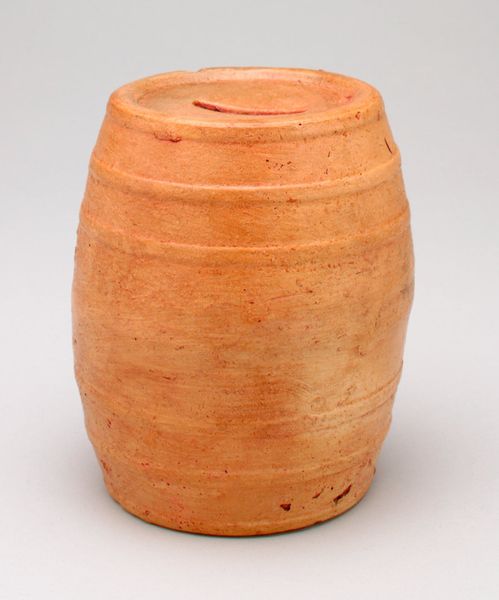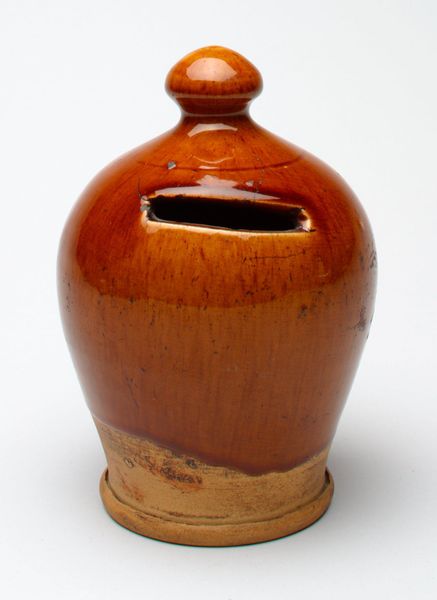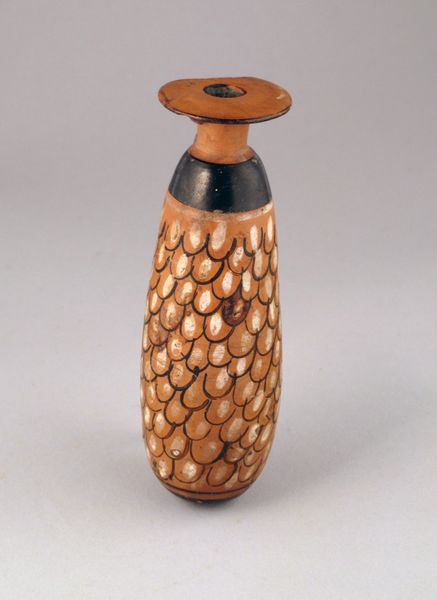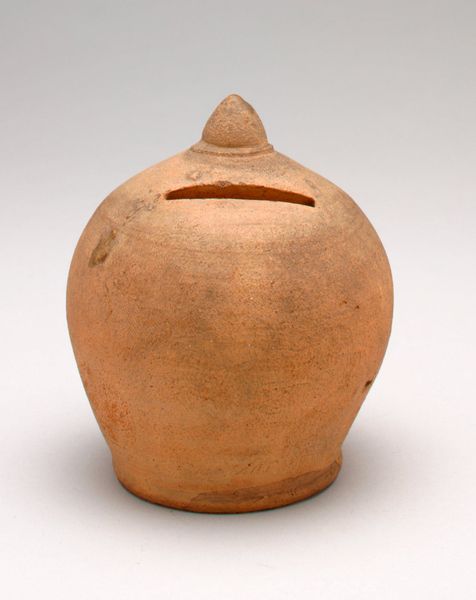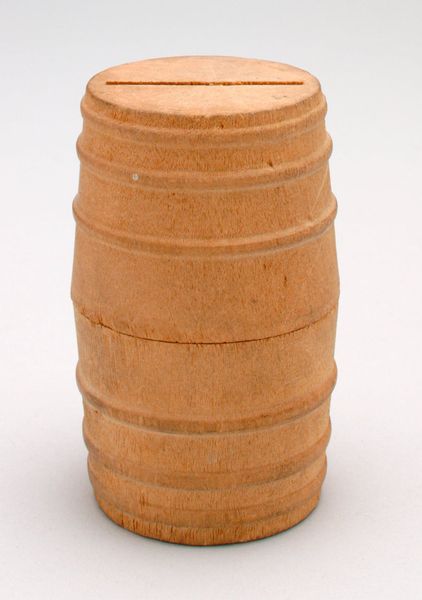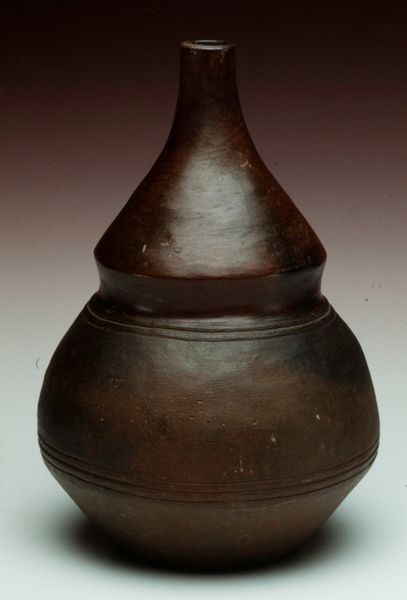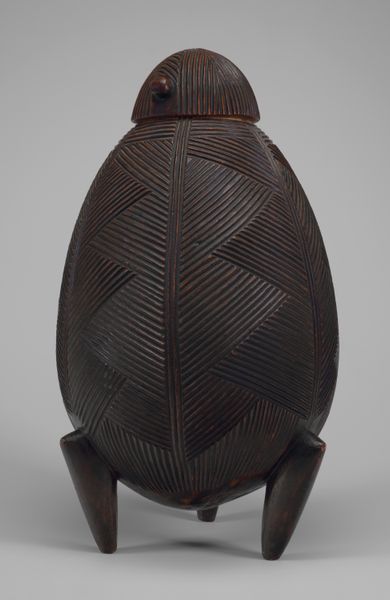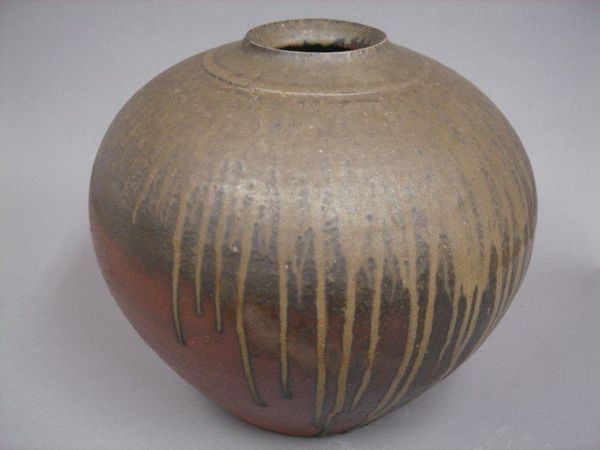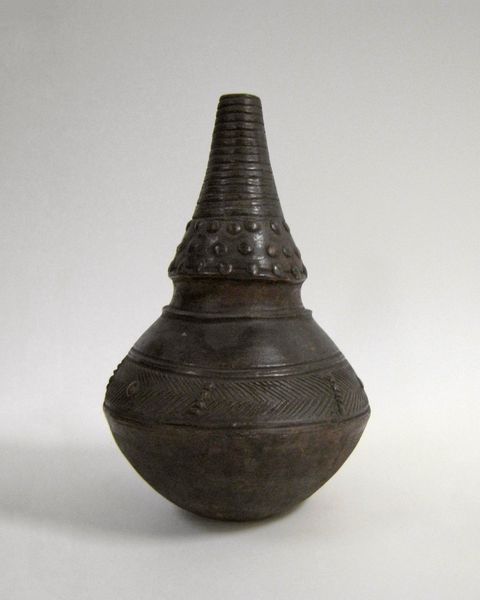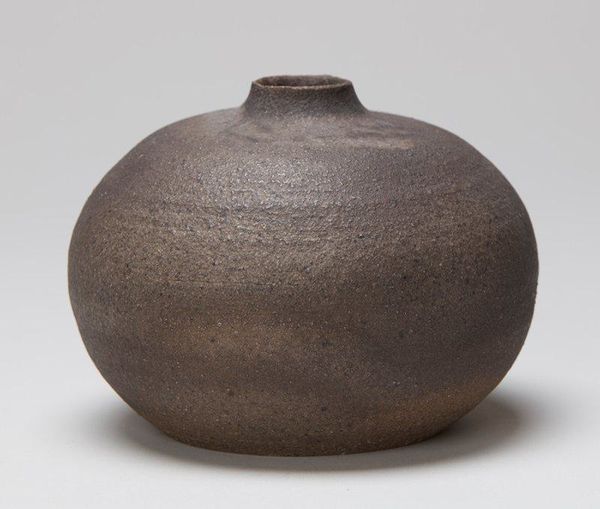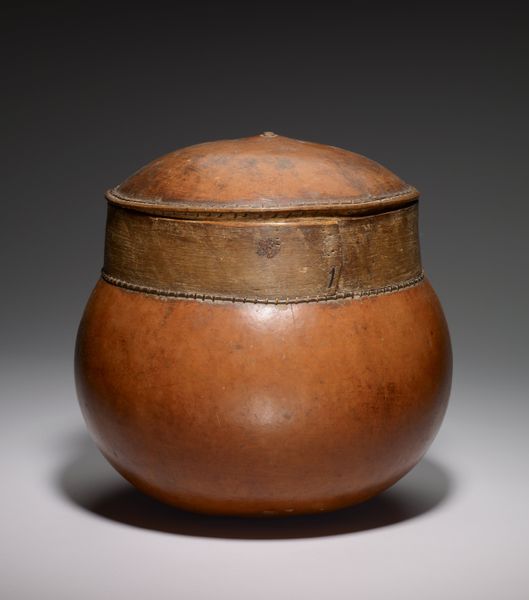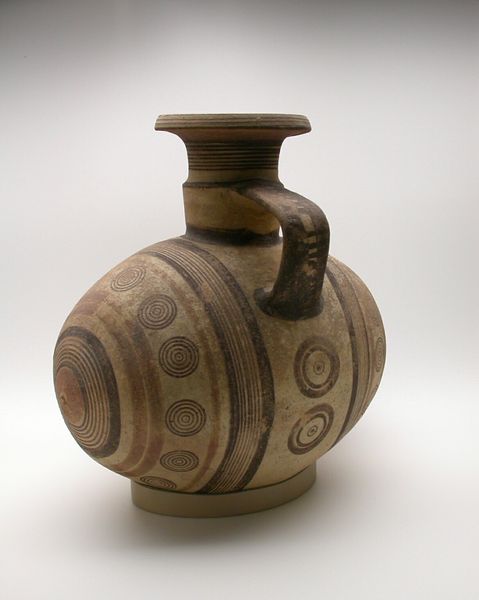
carving, ceramic, sculpture, wood
#
carving
#
ceramic
#
stoneware
#
folk-art
#
sculpture
#
ceramic
#
wood
#
decorative-art
Dimensions: 3 9/16 x 3 9/16 x 3 9/16 in. (9.05 x 9.05 x 9.05 cm)
Copyright: Public Domain
Editor: So, here we have a “Beehive still bank” from the late 19th or early 20th century, maker unknown. It’s this small, wooden sculpture that looks like a…well, a beehive. It gives me this strange sense of nostalgia and almost, longing for a simpler time. What catches your eye about it? Curator: The beehive has been a potent symbol for centuries. What does a beehive evoke? Community, industry, sweetness, certainly. It also speaks of careful, laborious work towards a collective goal. A single bee produces only a tiny fraction of the hive's honey. Editor: So, a child saving their pennies in this bank might have been indirectly taught about those values? Curator: Precisely. Think about the implied narrative. The coins, the fruit of small labors, are added, drop by drop, to accumulate within this hive-like form. There’s a direct connection, wouldn't you say, between the industry of bees and the hoped-for financial gains. What of its humble materiality? Editor: The fact that it’s made of wood connects to nature, obviously, but the carved form seems almost… idealized, very smooth and geometrical, which feels symbolic in itself. Curator: A cultural memory taking physical form. It distills collective hopes and desires around diligence, security, and perhaps, even the ‘sweetness’ of prosperity into something both simple and strangely profound. It speaks of very practical wisdom being passed between generations, don't you think? Editor: Absolutely. It’s fascinating how this little object contains such a rich tapestry of cultural associations. Curator: Indeed. It invites us to contemplate not just economics but the enduring values embedded within everyday objects and shapes our perceptions of the world.
Comments
No comments
Be the first to comment and join the conversation on the ultimate creative platform.
